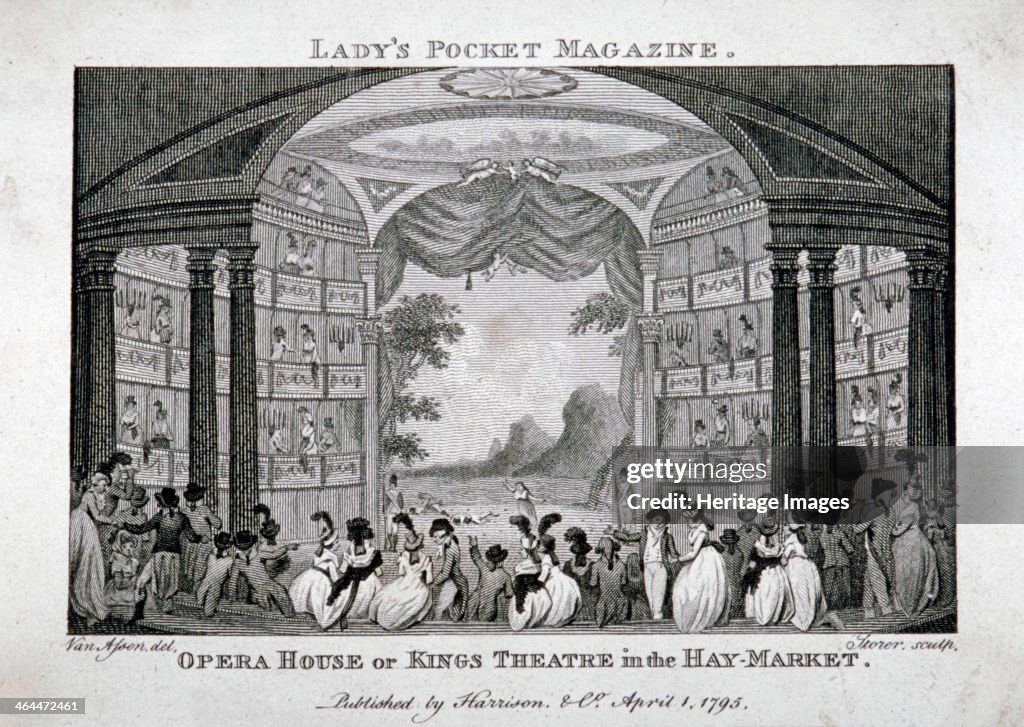
Interior view of the King’s Theatre, Haymarket, London, 1795. (Photo by Guildhall Library & Art Gallery/Heritage Images/Getty Images)
Originally established in 1720, The Theatre Royal Haymarket (or Haymarket Theatre), has had a long and distinguished place in history of London. By 1820, the theater company moved next door into the building designed by John Nash–its current home. However, during the Regency it was still in its original location on ther former site of the King’s Head and the Gun Smith shop.
Fire reduced its viability in 1789 after a series of unfortunate battles with the government it passed hands and experienced devastation and success intermittenly until it moved into its new home. The theater began a meteoric rise in popularity around the Regency area, as new theaters sprang up in London and in the larger cities of Britian. As the third oldest London playhouse still in use, The Little Theatre (as it was known) was situated in the prime West End location which still is the theater district of London.
During the Regency era, the management of the theatre was passed to George Colman, the Younger who was a talented dramatists. However, he lived beyond his means and was known to engage in literary feuds. A few of his more successful plays were: Poor Gentleman (1802), John Bull (1803), Love Laughs at Locksmiths (1803); despite his penchant for extravagant living he is recognized as one of the most profitable managers of The Haymarket in history.
After many successful years of running the Haymarket, he eventually brought in his brother in law D. Morris to help run it around 1806. Summer Seasons were flourishing and brisk business, despite competition, and Haymarket often had celebrated actors of the day perform (like Kemble).
In 1811, George the Younger was invited to Carlton House by the Duke of York, where he continued to tease both the Duke and Prinny until Prinny burst out into song and Colman threatened to lure him to the stage. George’s wild behavior created friction between himself and Morris, which resulted in a closed theater for the season of 1813 and a bumpy and late entree into the season of 1814. Undoubtedly it was this rocky relationship that led to the 1820 sale of Haymarket and its reconstruction by John Nash.
For wonderful letters and accounting of the wild and witty George Colman the Younger, check out his memoirs and letters here.
Find out about what was playing and who was doing what here:










